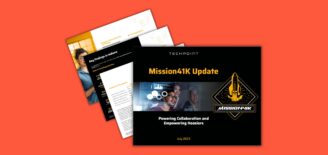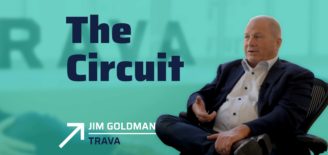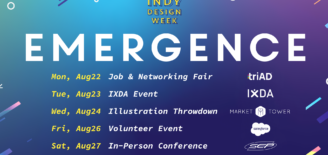The Ultimate Guide to Mastering Employee Engagement in 2017
If your company has yet to place an increased emphasis on employee engagement, you need to start right now. Every day, HR departments all over the world are focusing more and more on their employee engagement strategies, and it’s not hard to see why.
Here in the United States, unemployment rates have plummeted, with more skilled workers in the job market than ever before. Last November, Indiana’s unemployment rate dropped to 4.2 percent – the lowest it’s been since 2001. With this influx of new talent comes the need for organizations to create strong employee engagement plans that actually keep their talent around.
But what is employee engagement really, and how can you improve your own engagement strategy? Below, you’ll find everything you need to know to succeed at employee engagement in 2017.
What Is Employee Engagement?
First, let’s be clear: A happy employee is not always an engaged employee. Employee engagement goes much deeper than employee satisfaction. If your employees are truly engaged, they are emotionally invested in their work and highly committed to your organization. They advocate for the company, have no plans to leave, and enjoy helping the company succeed.
Every business needs those kinds of employees.
The bad news is that today’s diverse workforce makes it difficult to develop engaged employees. In fact, a 2015 research report conducted by the Society for Human Resource Management (SHRM) found that “maintaining high levels of employee engagement” is a top challenge for businesses today.
The good news is that it’s never too late to get started! There are plenty of proven strategies you can implement right away.
Here are five tactics you can use to improve employee engagement at your organization:
1) Foster Strong Relationships
A good place to start is to provide opportunities for employees to develop close connections with each other. SHRM’s 2016 job satisfaction and engagement report found “relationships with coworkers” to be one of the top three employee engagement conditions. Similarly, TINYpulse’s 2015 employee engagement and organizational culture report found that peers and colleagues are what employees love most about their jobs.
To nurture these important relationships, first make sure you’re hiring the right talent. Companies need employees who mesh well while energizing and motivating one another. You should also consider sponsoring team-building events or service projects that bring employees together outside of the normal work setting. Situations like these allow employees to get to know each other on a more personal level, which can make working together more comfortable and enjoyable.

2) Value Innovation and Agility
The business world moves fast and changes frequently, so encouraging your employees to be agile and innovative is essential. Employees who are willing and able to create positive change and respond enthusiastically to unexpected bumps in the road are extremely valuable.
Make sure your employees know these qualities are valued in your organization. Communicate openly with them, allow them to challenge processes and bring their ideas to the table, and help eliminate any fear of failure they might have. Giving employees a chance to evolve with your company and, in fact, contribute to the company’s evolution will help develop deeper engagement and commitment among your workforce.
3) Recognize and Reward Employee Performance
According to AON’s 2016 global employee engagement trends report, “rewards and recognition” is one of the top three engagement drivers globally. It makes sense. Engaged employees feel valued and appreciated, and the best way to cultivate those feelings is by recognizing employee performance.
To motivate and recharge your team members, create a rewards program that frequently recognizes employees for their efforts and achievements. It doesn’t have to be complicated either. Give stand-out employees a small “prize” like a free gift card or acknowledge their efforts in office-wide communications. Most importantly, don’t forget to incentivize your employees with role promotions and pay raises. Communicating team successes and offering rewards promotes camaraderie and makes employees feel like an essential member of your organization.
4) Use Mobile-Friendly Communications
Let’s face it: it’s 2017, and technology dominates our lives. Today’s workers are tech-savvy and they increasingly expect instant access to information. Why make it harder for them through outdated methods? If you’re still communicating with employees exclusively through email or paper office memos, your engagement levels are probably low.
Improve your engagement rates by adopting virtual messaging tools like HipChat or Slack and staying active on social media sites like Instagram. You can even take it a step further and consider implementing an employee engagement app that is specifically designed to help you connect with your employees and boost their enthusiasm.
5) Measure Engagement
Implementing effective employee engagement strategies is meaningless without taking time to analyze the outcomes. This is why your strategy should include regular measurement of engagement among your employees.
Use an online form tool or data collection platform to conduct thorough annual or quarterly employee engagement surveys. You can also create quick polls to send out more frequently throughout the year. These surveys and polls will help you gather actionable information about what is motivating or discouraging employees, and will allow you to make informed workplace improvements to boost engagement.
After implementing these five tactics, you will likely start to notice positive changes in company morale and employee success. We often use these strategies at Formstack, and have seen amazing results. Get started with one of these tactics today, and see how it transforms your organization. Your employees will thank you.
 About the Author
About the Author
Chris Byers is the CEO of Formstack, an Indianapolis-based company offering an online form builder and data collection platform. Prior to Formstack, Byers co-founded an international nonprofit that was built via remote relationships among partners in Europe, Africa, and the United States.





































